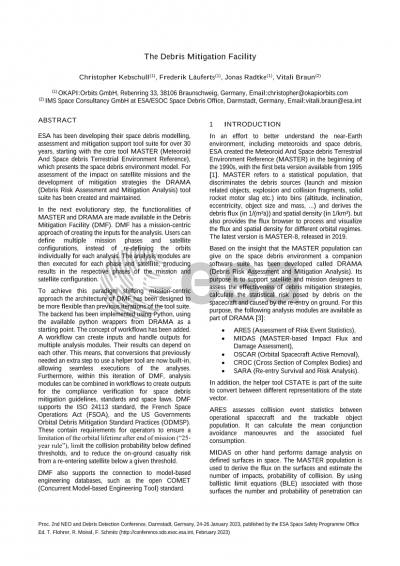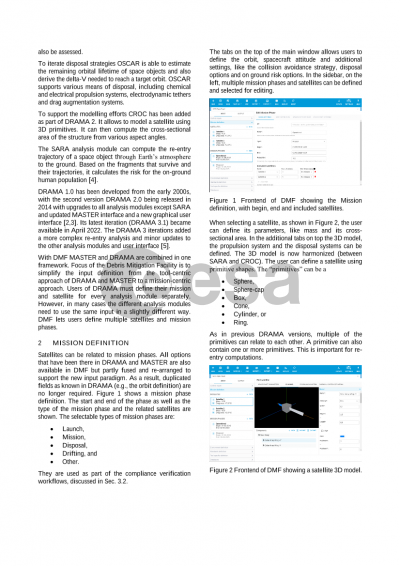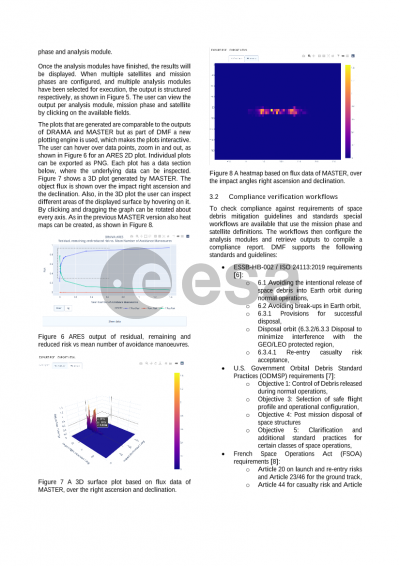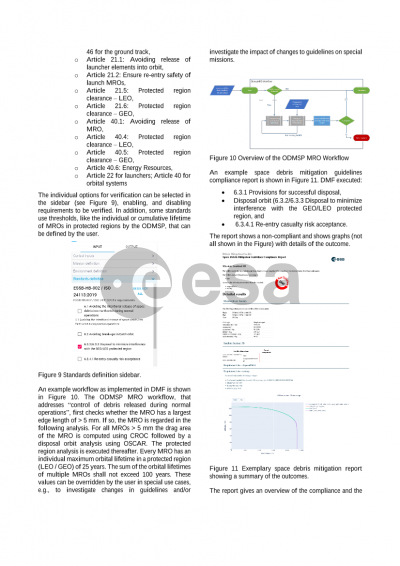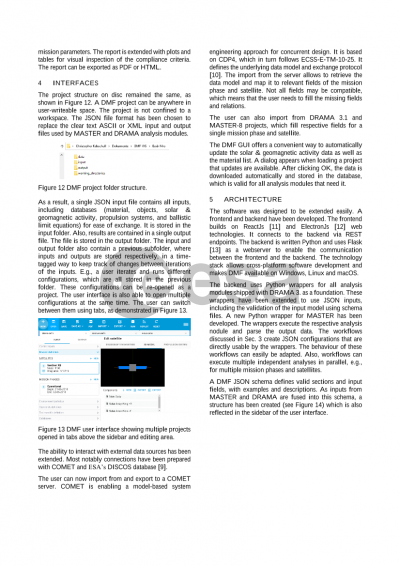Document details

Abstract
ESA has been developing their space debris modelling, assessment and mitigation support tool suite for over 30 years, starting with the core tool MASTER (Meteoroid And Space debris Terrestrial Environment Reference), which presents the space debris environment model. For assessment of the impact on satellite missions and the development of mitigation strategies the DRAMA (Debris Risk Assessment and Mitigation Analysis) tool suite has been created and maintained. The software can be used to compute the statistical collision probability, the damage on specific surfaces of the satellite due to space debris and micrometeoroid impacts, the estimation of the collision avoidance manoeuvres to keep the mission within an accepted collision probability level (ACPL), compute the remaining and residual risk that cannot be reduced with collision avoidance, the design of disposal orbits, analyse the break-up during re-entry as well as the on ground casualty risk due to surviving fragments. The output can be used to define requirements on the spacecraft as well as analyse the compliance of a satellite mission with space debris mitigation related requirements.
In the next evolutionary step, the functionalities of MASTER and DRAMA are made available in the Debris Mitigation Facility (DMF). DMF has a mission-centric approach of creating the inputs for the analysis. Users can define multiple mission phases and satellite configurations, instead of re-defining the orbits individually for each analysis. The analysis modules are then executed for each phase and satellite, producing results in the respective phases of the mission and satellite configuration.
To achieve this paradigm shifting mission-centric approach the architecture of DMF has been designed to be more flexible than previous iterations of the tool suite. The backend has been implemented using Python, using the available python wrappers from DRAMA as a starting point. The concept of workflows has been added. A workflow can create inputs and handle outputs for multiple analysis modules. Their results can depend on each other. This means, that conversions that previously needed an extra step to use a helper tool are now built-in, allowing seamless executions of the analyses. Furthermore, within this iteration of DMF, analysis modules can be combined in workflows to create outputs for the compliance verification for space debris mitigation guidelines, standards and space laws. DMF supports the ISO 24113 standard, the French Space Operations Act (FSOA), and the US Governments Orbital Debris Mitigation Standard Practices (ODMSP). These contain requirements for operators to ensure a limitation of the orbital lifetime after end of mission (“25-year rule”), limit the collision probability below defined thresholds, and to reduce the on-ground casualty risk from a re-entering satellite below a given threshold.
DMF also supports the connection to model-based engineering databases, such as the open COMET (Concurrent Model-based Engineering Tool) standard. The software is currently in the final stages of development. Extensions of DMF are on the way adding a connection to ESA’s DISCOS database, updating the analysis modules and adding capabilities to analyse the trackability of spacecraft by SSA systems.
Preview
